What I did on my holidays, 10 – Turning for home (with a stopover)
It’s a pretty savage amusement to travel by train from Salzburg back to the UK in one day. I did it back in 1996, and with a 5am start from my hotel and the first train for Munich out of the city, I landed back in the Midlands around 10:40pm – so nearly eighteen hours’ travelling, although this was in the time before high-speed rail. But in planning this trip, one objective was to take advantage of travelling by train to include a stopover. That had (eventually) worked well in Zürich on the way out, so I wanted to repeat the process on the way back. After some head-scratching with maps and timetables and the like, I eventually settled on Ulm in southern Germany as a likely stop-over. I had only ever passed through Ulm before, so I had no real idea what would be there, although some research suggested that there would be things of interest.
The journey to Ulm was reasonably straightforward, although the seat reservations computer decided to fill the train from one end in strict order – so on boarding the train, we walked the length of our coach past empty compartments to find ourselves taking the last two seats in a full compartment. This seemed a little perverse to us, but we did eventually strike up a conversation with some of our fellow travellers; in particular, one lady who knew Ulm and assured us that we would enjoy it.
Which was more than we could say for Deutsche Bahn, at least on this leg of the journey. Their staff varied from the helpful to the officious; and their idea of a first class compartment was to take an existing compartment coach, tear out the existing seats, and insert six bucket seats as used in the first class coaches of their high-speed Inter-City Express (ICE) trains. This resulted in seat spacings that didn’t match the sort of standards you’d expect from first class; I rather suspect that this was a cheap and cheerful way of upgrading rolling stock from Second to First.
Anyway, we arrived at Ulm and our initial impressions were not helped by the weather, which remained wet and cloudy throughout the day of our arrival and the next. But it is a town with much to recommend it, though you have to look. Our hotel was only about five minutes from the station and was on the edge of the old town. The city was heavily bombed in December 1944 and much of the old town centre was destroyed. It was rebuilt on much of the old street plan and many buildings were reconstructed based on their appearance before the war, but using the materials of the 1950s and 1960s. Some individual buildings survived; others have been restored to their original condition since then.
We took an evening walk around the immediate surroundings of the hotel. The streets were cobbled and dedicated to pedestrians (in that they had priority over cars, which were not banned as such). We could see the pattern of the old buildings, with roof-lines or floor plans that betrayed the original buildings; occasionally, we would turn a corner to reveal a building restored to its full half-timbered glory. But as the rain showed no sign of letting up, we retreated to our hotel – an odd place where the rooms were in a separate building in a courtyard that included an entrance to an underground car park. This courtyard was accessible from the street without any need to enter the hotel via the front door. It was actually quite modern, with a spacious room and (for once) good internet connectivity. It’s strange how something so new has become an essential for even the most casual traveller.
The next morning, the weather was little better. We retraced our steps of the previous evening and found ourselves in the main town square, facing Ulm Minster. Despite appearances, this is not a cathedral; nonetheless, it is remarkable for its size and its spire, which at around 520 feet is the tallest church spire in the world.
So the Fishermen’s Quarter, which we spent some time in, is a maze of cobbled streets and pathways, which sometimes
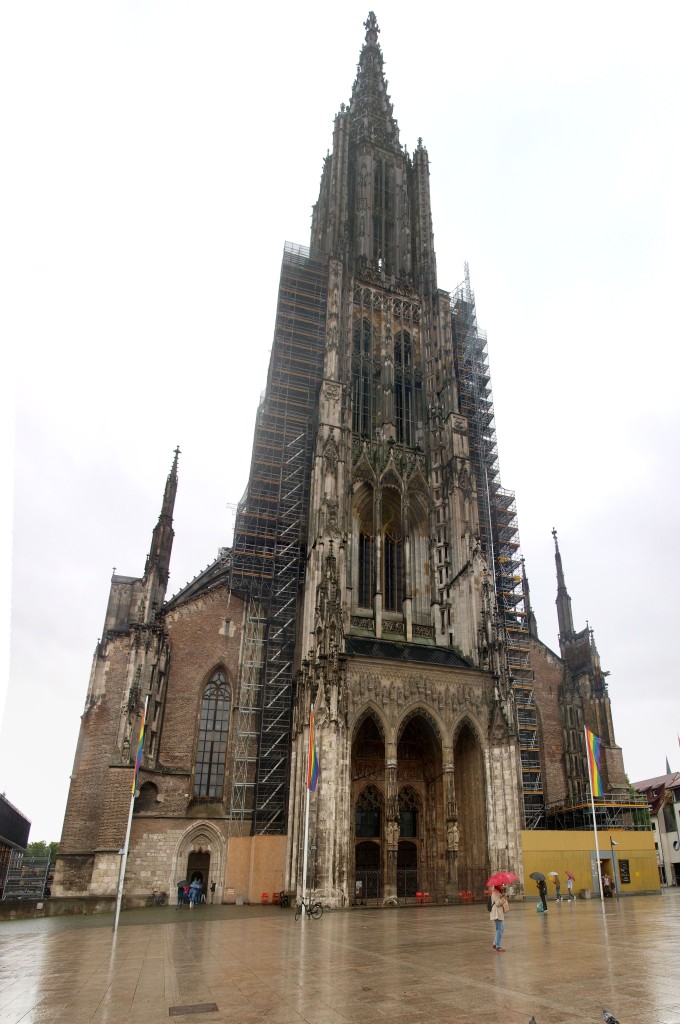
The inside is as spectacular as the outside. There were notices setting out the usual prohibitions for visitors that you would find in ecclesiastical buildings anywhere, including one on photography. But it seemed that lots of people were taking photographs with their mobiles; and the pictogram on the sign showed a digital SLR camera, so we thought phones would be OK – not that I’ve ever used mine for photography much. I was reasonably pleased with the results, though some of my close-ups suffered from camera shake as I was unused to the camera controls and how to hold the phone.
Later we did see someone using a DSLR; only then did I look again at the pictograms on the prohibitions sign to see that the sign showed a camera on a tripod. That’s a very specific ban!
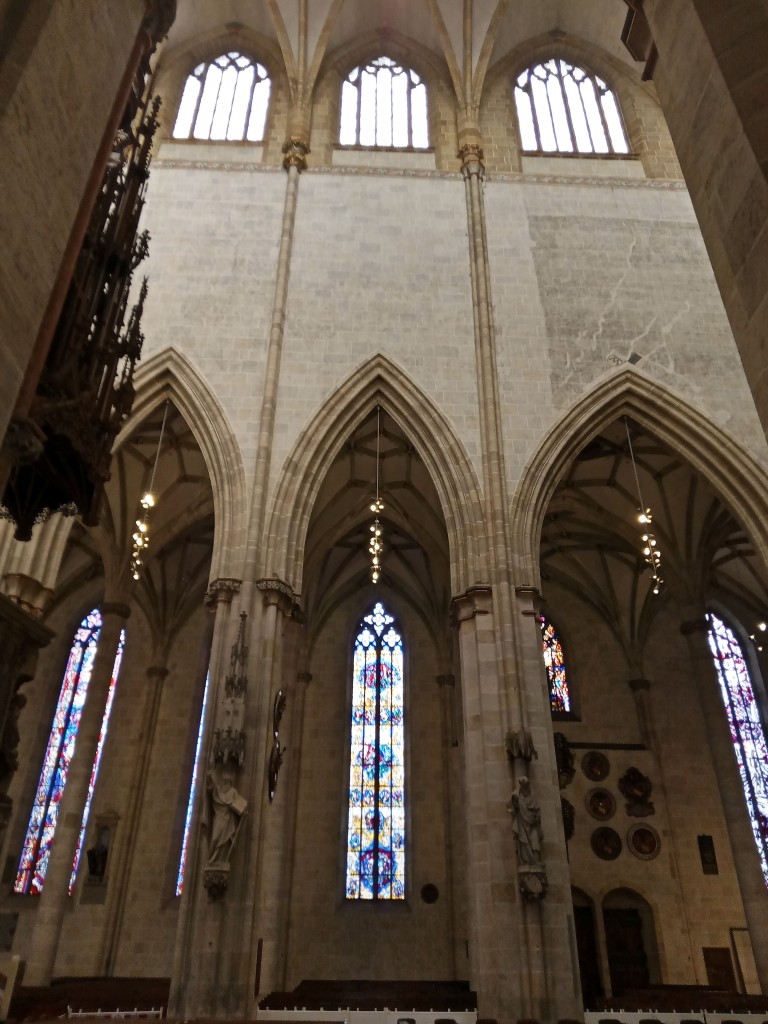
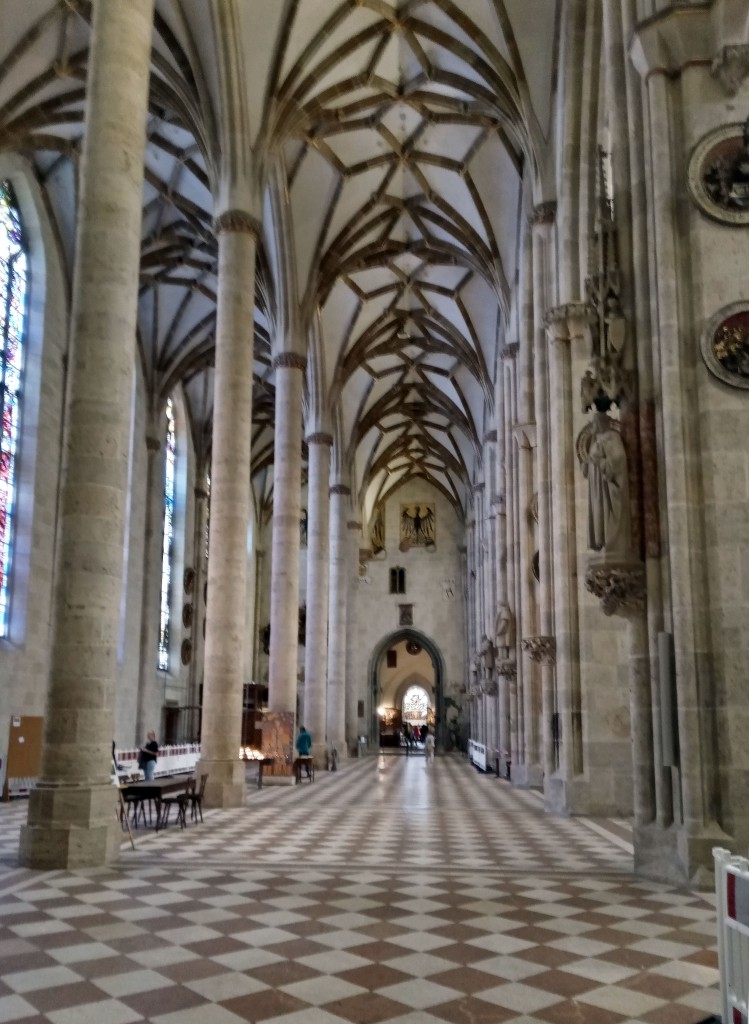
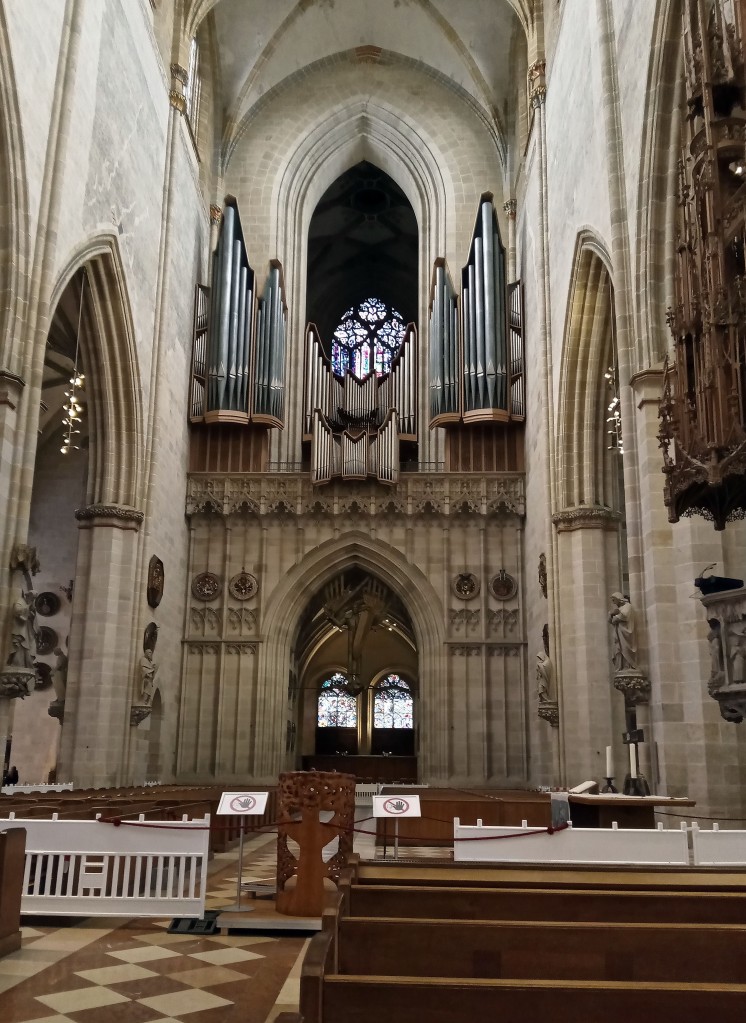
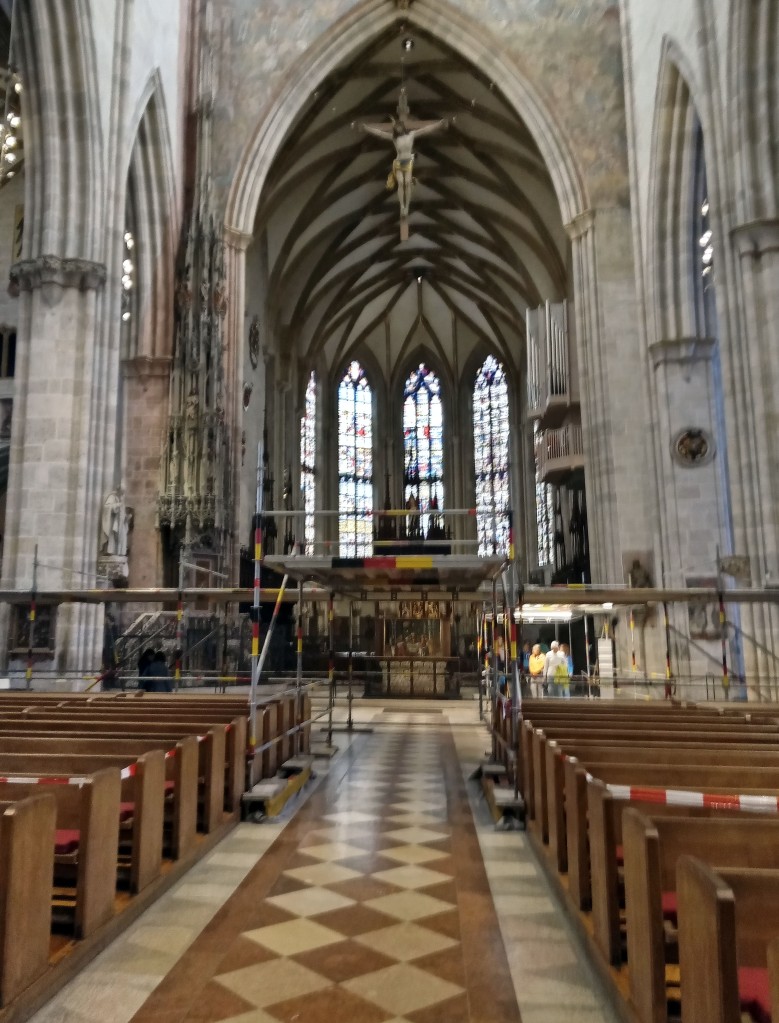
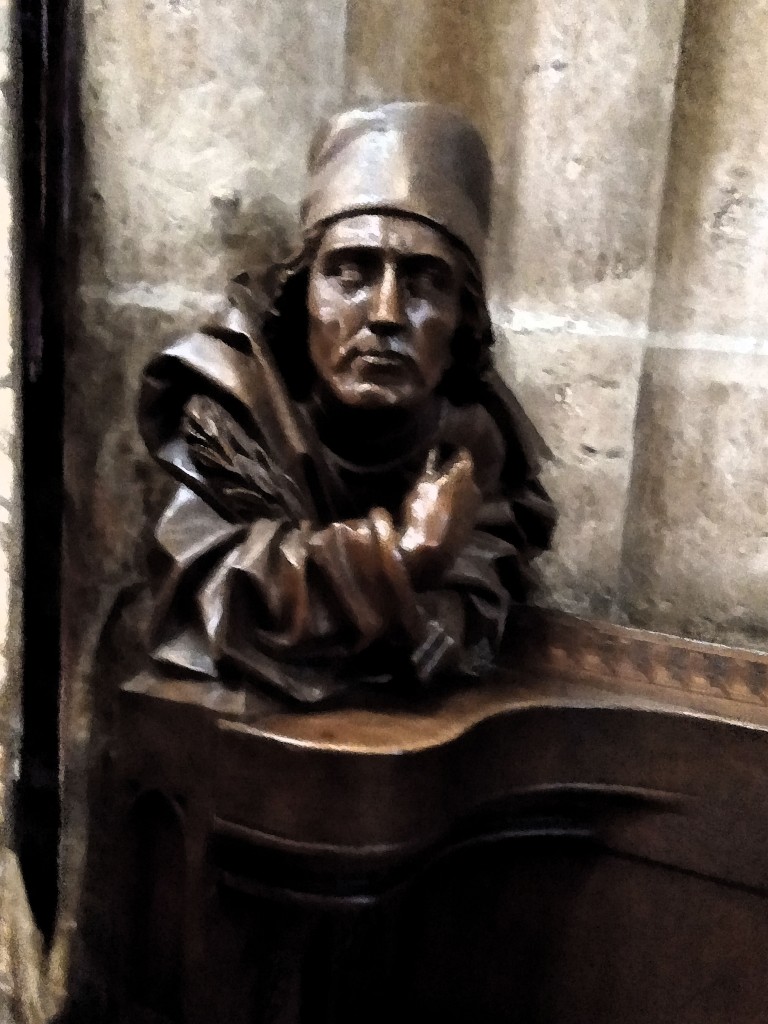
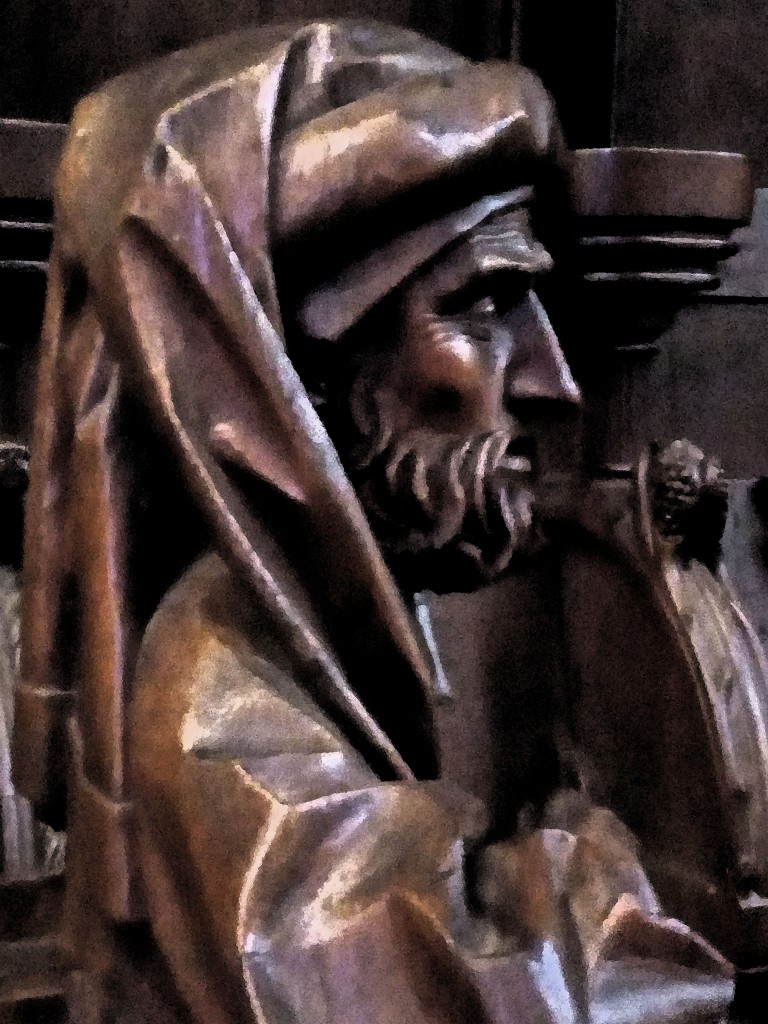


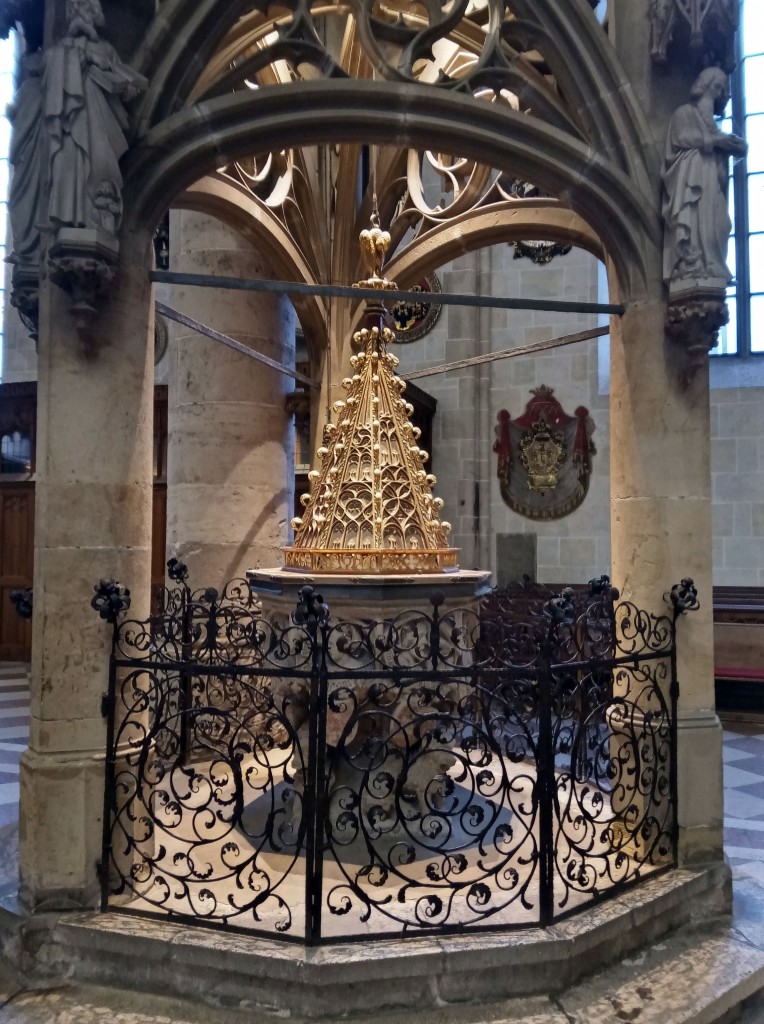
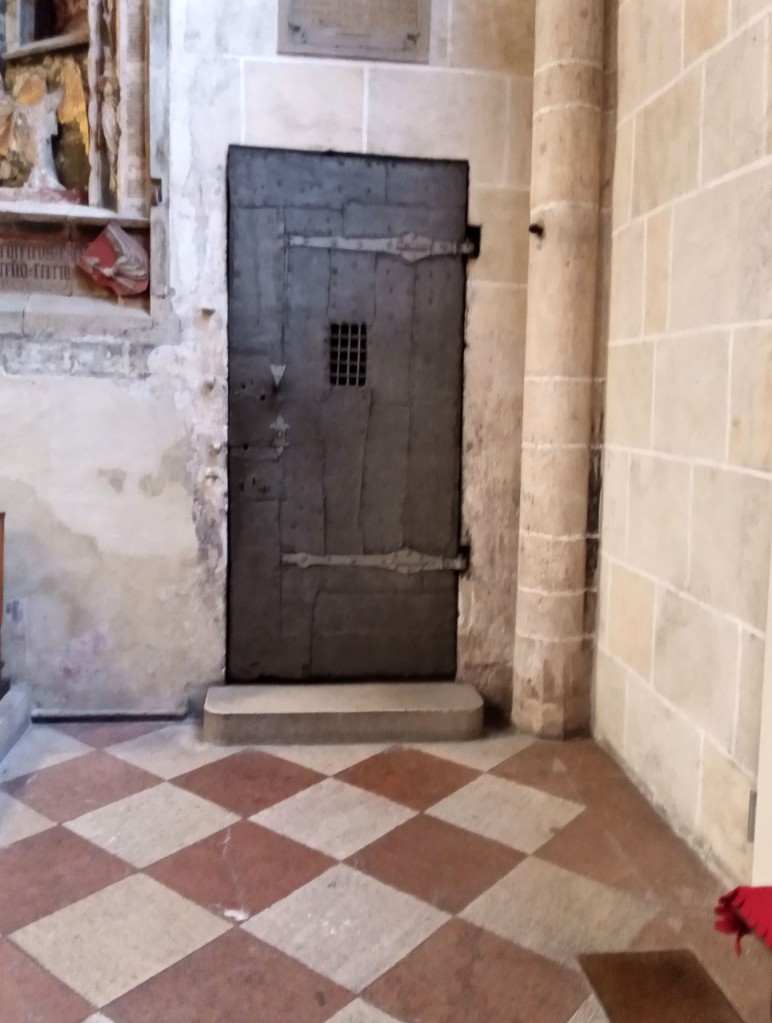
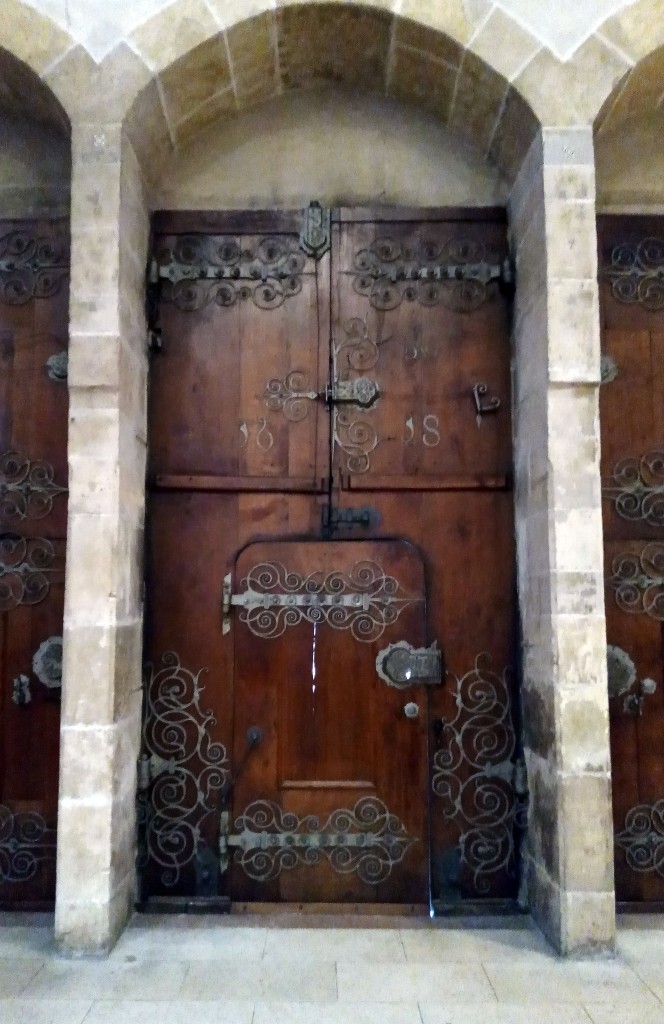
One of the minster’s stand-out features are the choir stalls, carved by Jörg Syrlin the Elder (15th century). These pictures suffered the most from my camera shake problems, so I enlisted the wonders of Photoshop to render them using one of the artistic filters to make the blur seem deliberate. It at least makes them viewable, in my humble opinion.
From the Minster, we went down towards the River Danube, through the Fishermen’s Quarter.
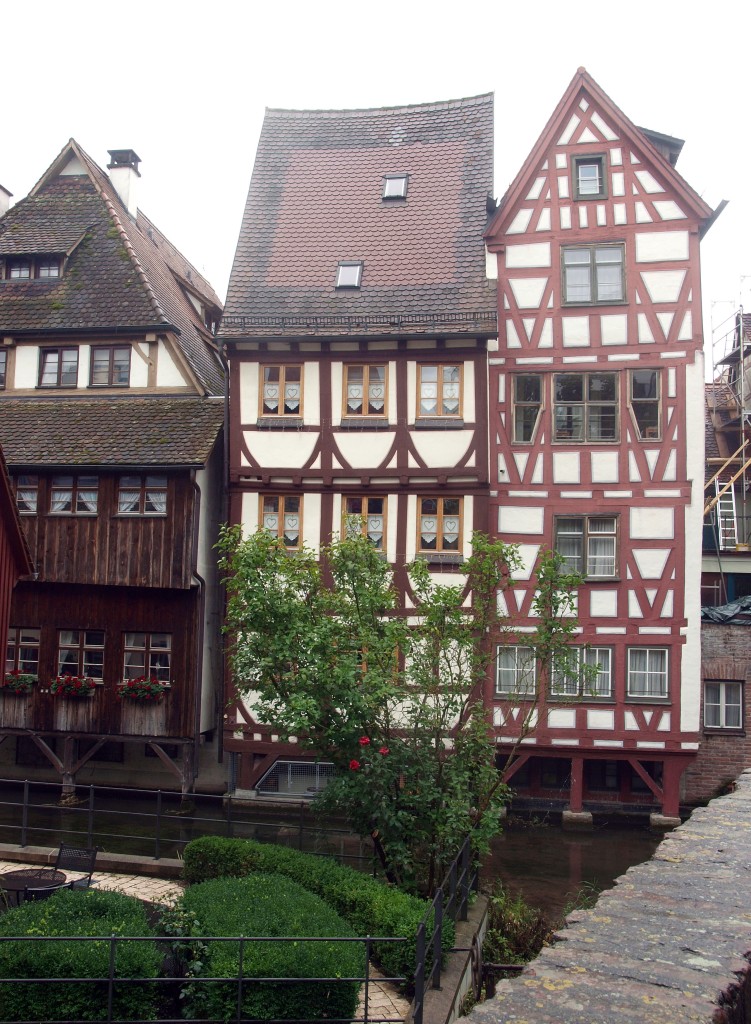

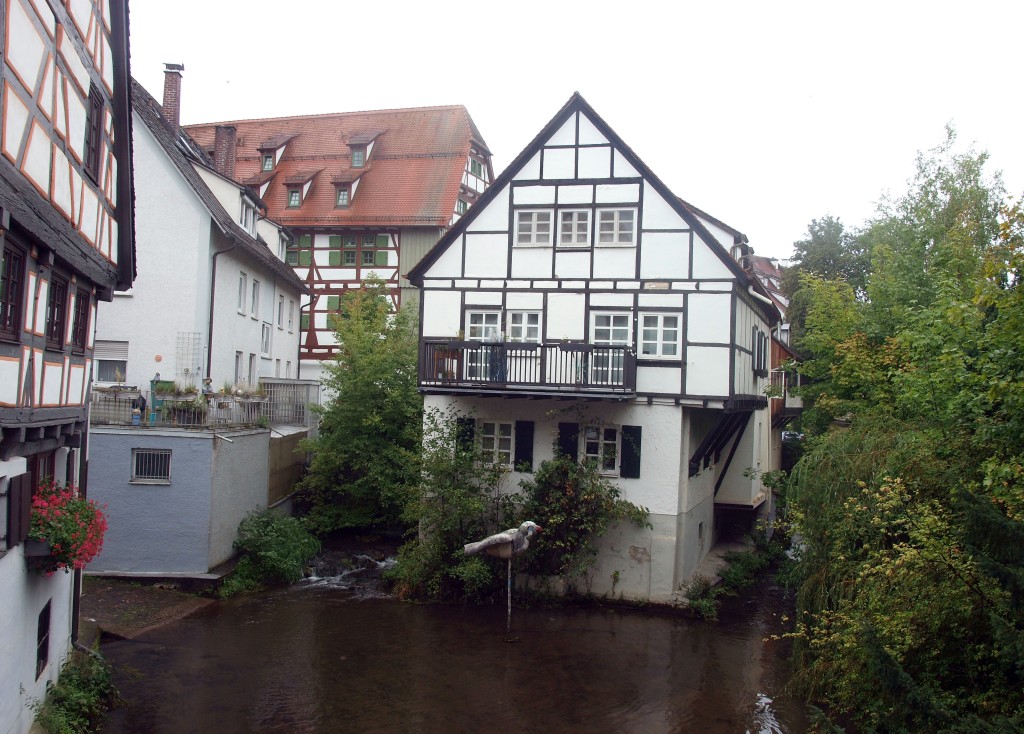
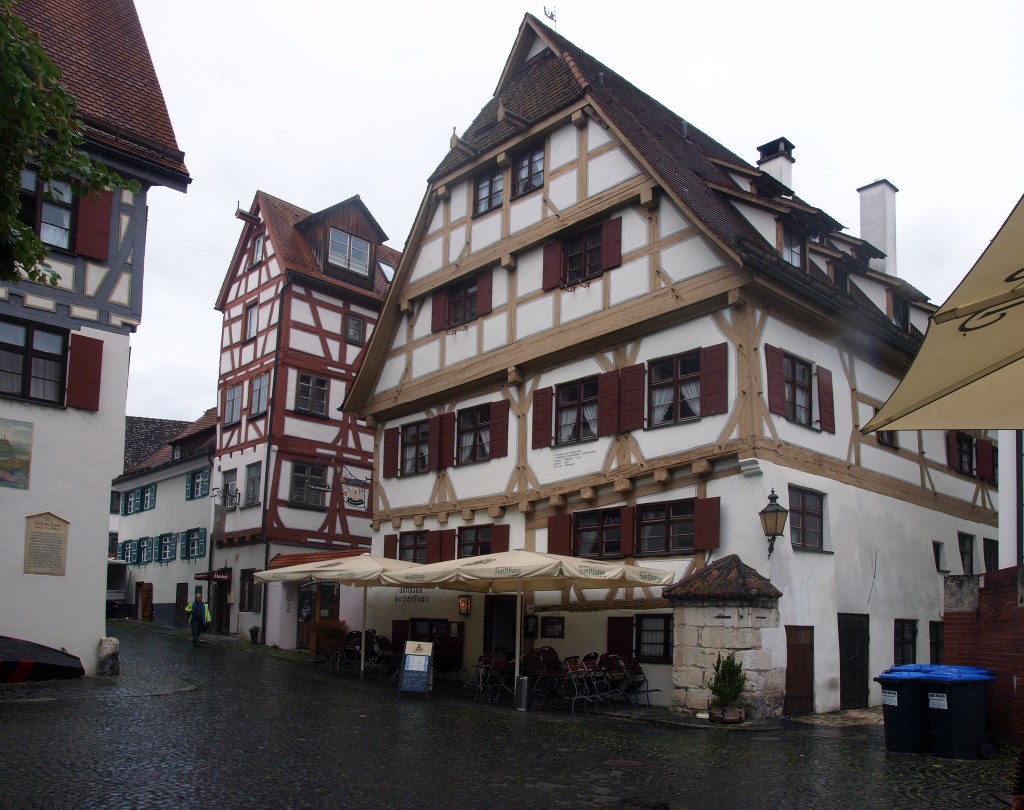
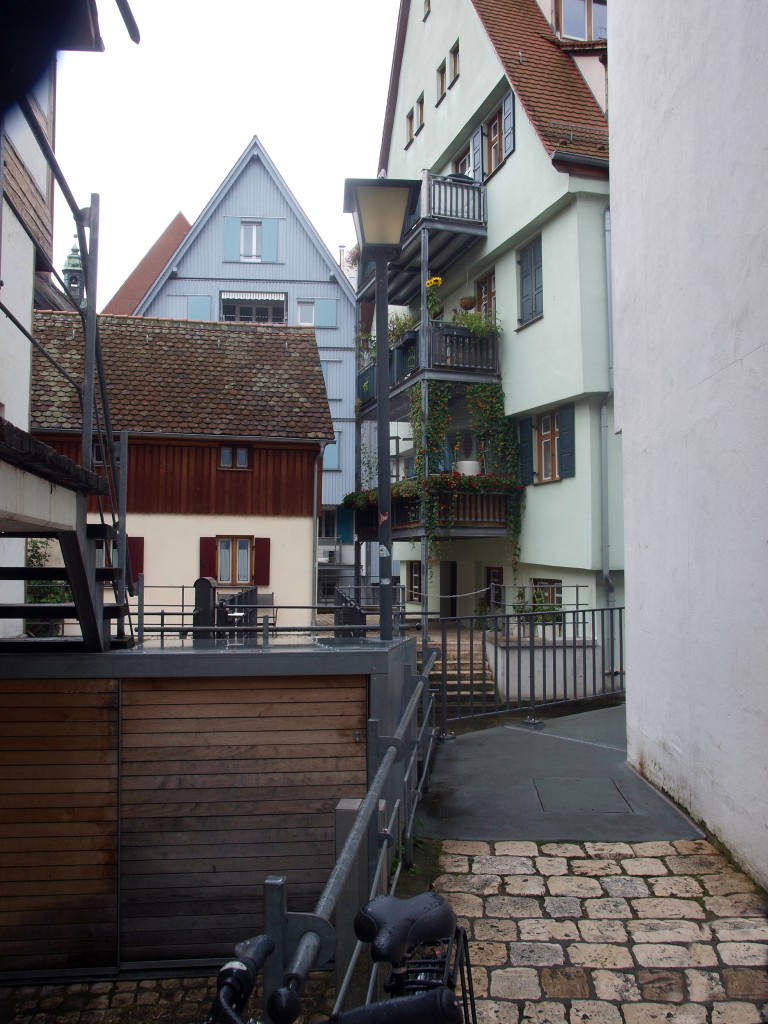
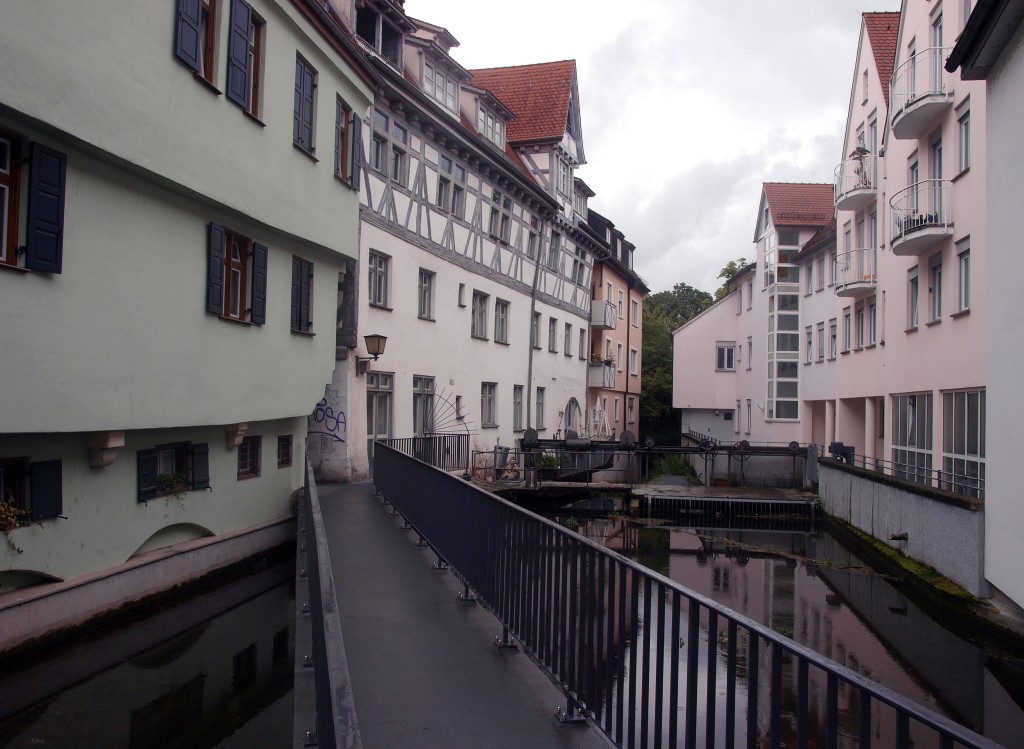

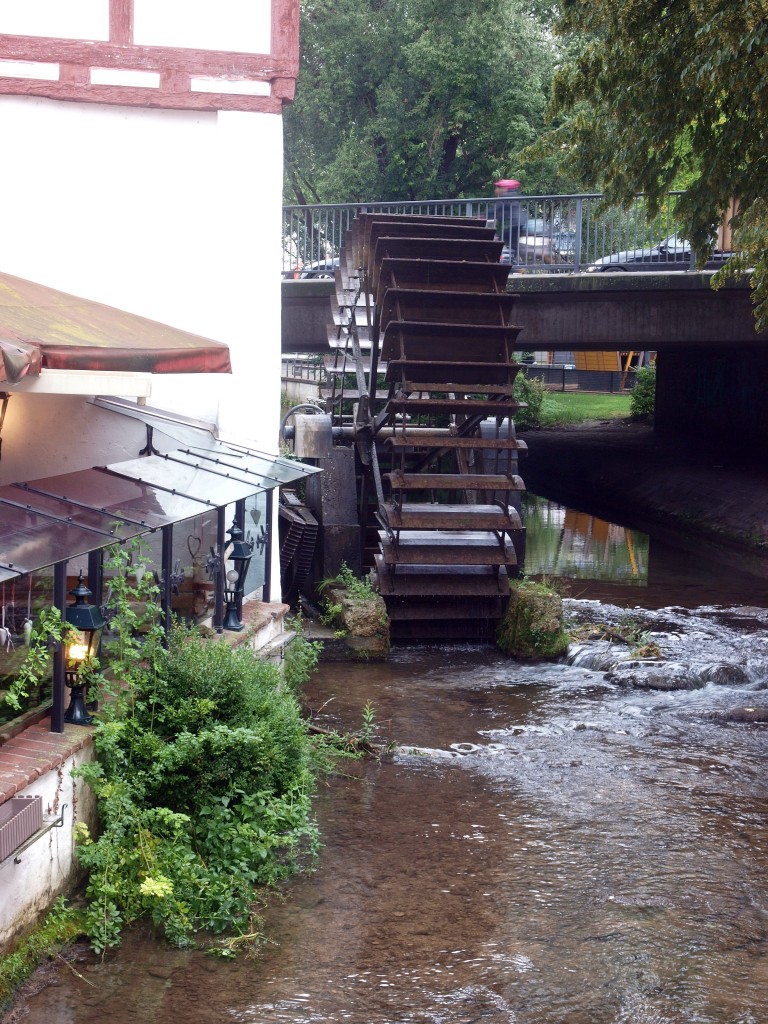
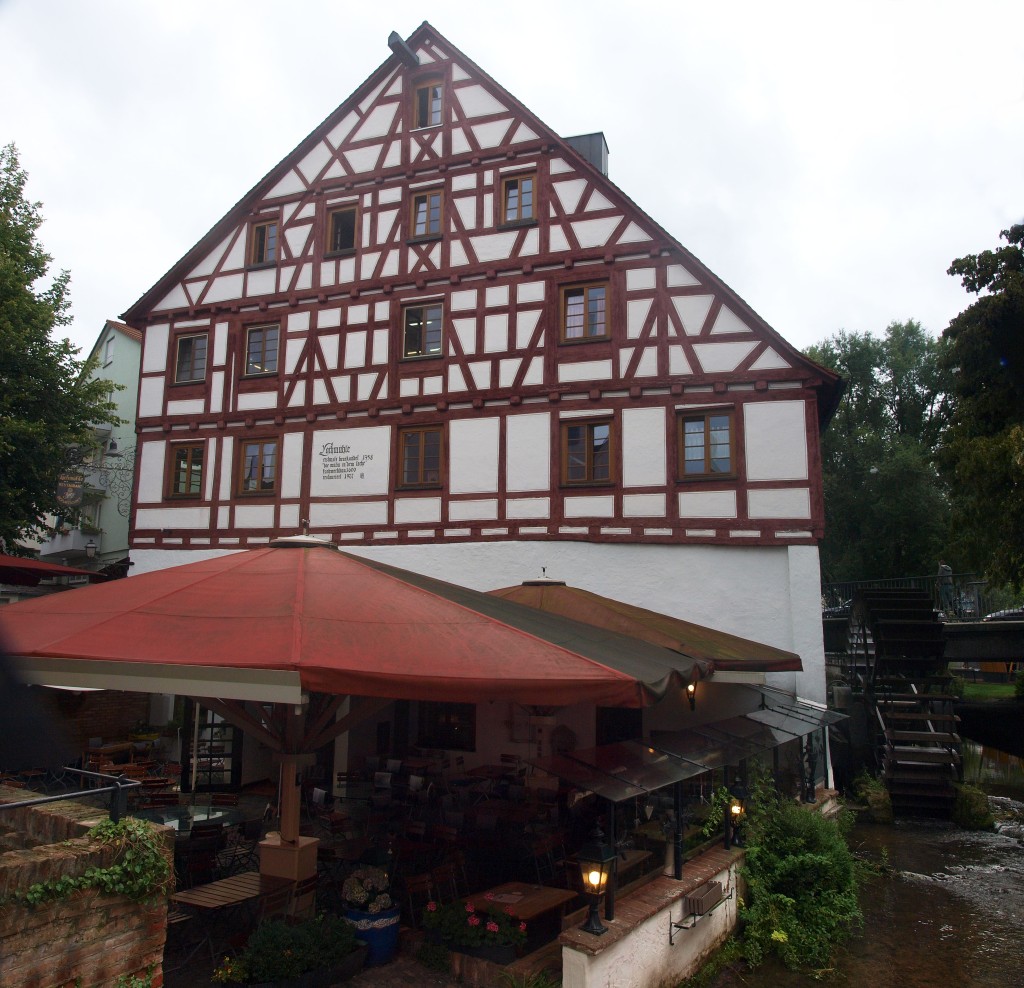
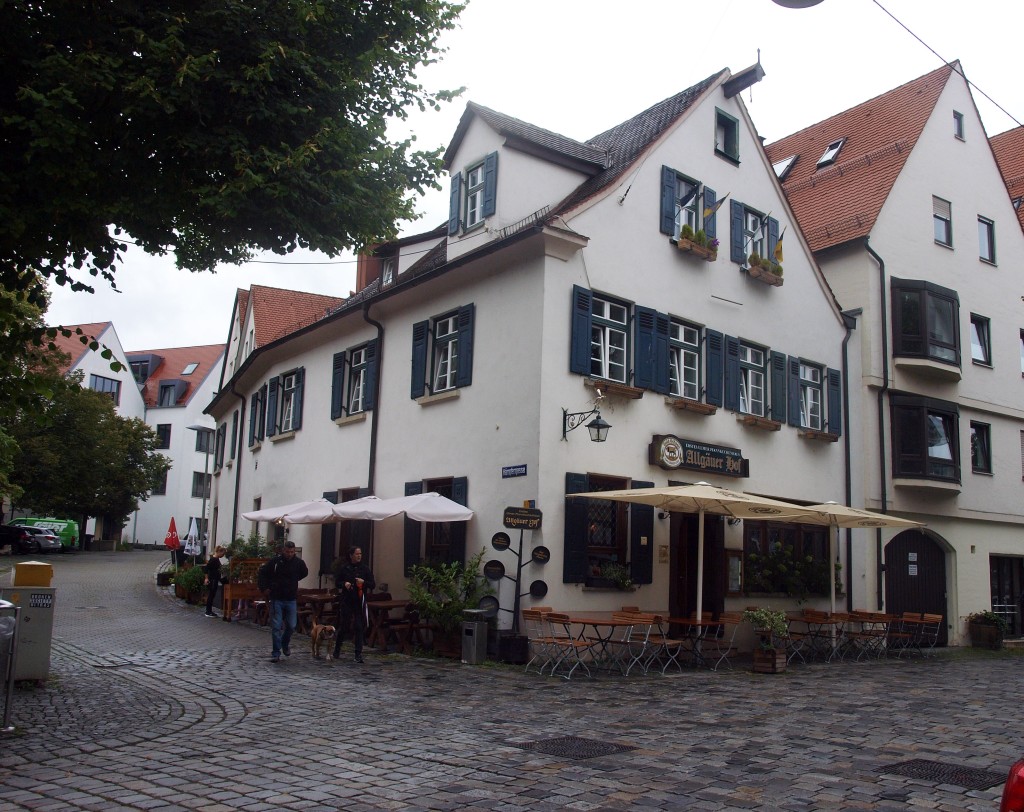
The last picture above shows the Allgäuer Hof, a pleasant hostelry where we stopped for lunch. There were no shortage of places to eat in the Fishermen’s Quarter, but there were very few people about and most of the places we looked at seemed quite large and empty. But this one felt more welcoming, and so it proved. It apparently has a reputation for crepes, but the rest of the menu was equally good. Lunch was simple but substantial; but perhaps the biggest surprise for me were the toilet facilities. I opened the door and was dazzled by bright lights and a Gents that shouted Cleanliness and Order. Good German virtues are alive and well in Ulm!
On leaving the Allgäuer Hof, we soon found ourselves in the Schweinmarkt, which has a quirky statue marking its history.

The statue, by sculptors Wolfgang und Christoph Oester, was unveiled in May 2001.
We then headed for the river, to find a Danube that was anything but Blue.
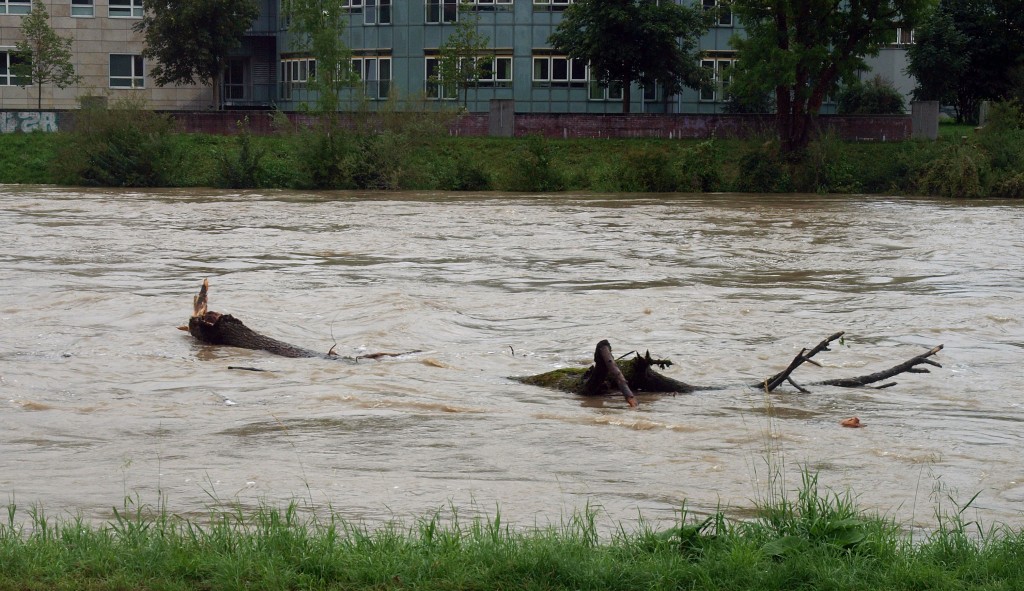
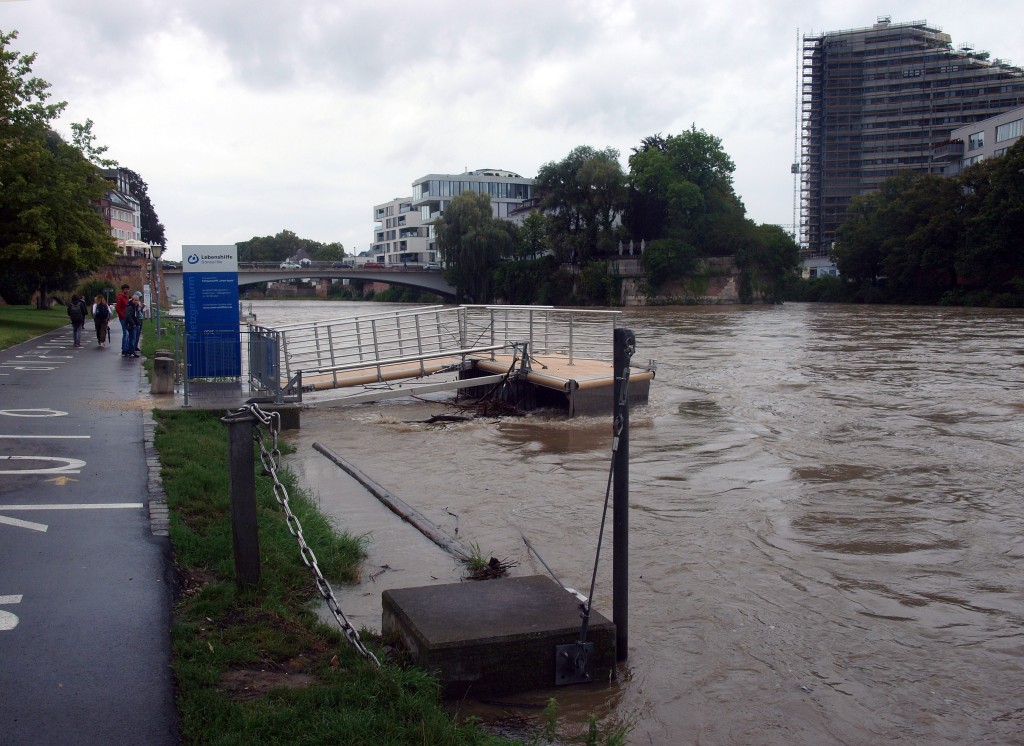
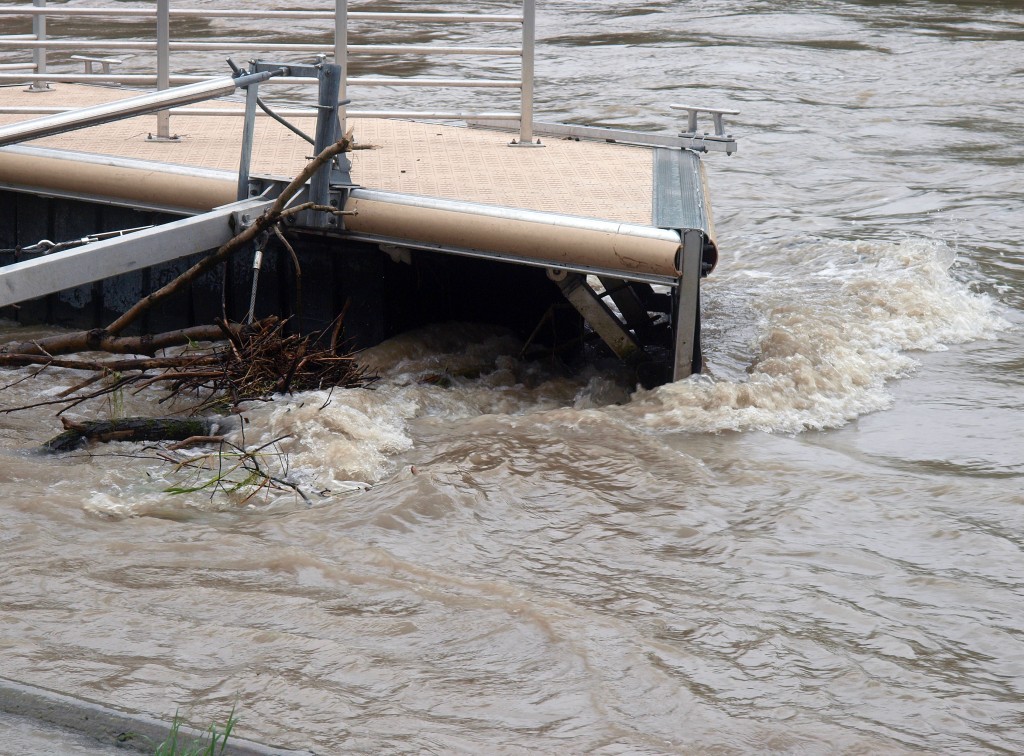
The heavy rain of the past few days that had fallen on the Bavarian uplands was now pushing its way downstream; some areas where we had already been were suffering flooding. Tree limbs were being washed downstream – the one in the photograph above was far from the smallest. But it didn’t bother the bird life – we sat for a few minutes and saw many sparrows – often a rarity in the urban UK these days – and a heron.
Finally, we walked a way along the river bank to the Metzgerturm (Butchers’ Tower), which has a tilt of some two metres at its top; and then crossed back into the town through the old town walls and headed back to the hotel to dry off.
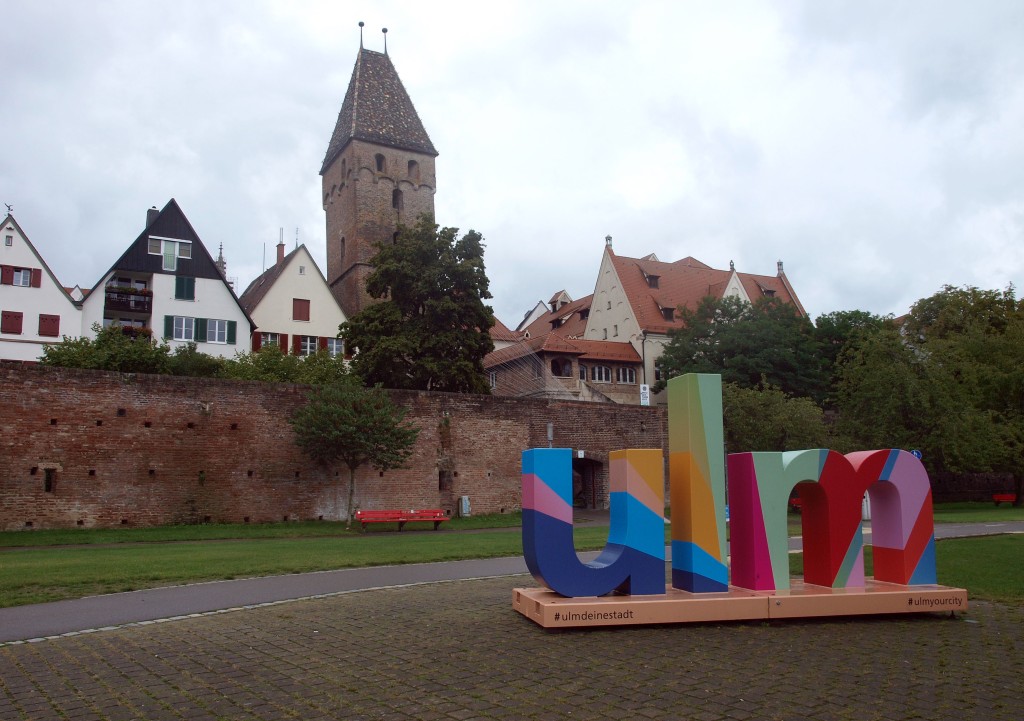
All in all, Ulm was a pleasant surprise (apart from the weather), and I’m sure there was plenty more to see.
Previously: Day 9, Wet Salzburg
Next: Day 12, the voyage home
More photographs can be seen on my Flickr page.
[…] Next: Days 10 & 11, Ulm […]
What I did on my holidays, 9 – wet Salzburg | Steer for the deep waters only
October 12, 2023 at 11:32 pm
[…] Previously: Days 10 & 11, Ulm […]
What I did on my holidays, 11 – the voyage home | Steer for the deep waters only
October 13, 2023 at 10:53 pm